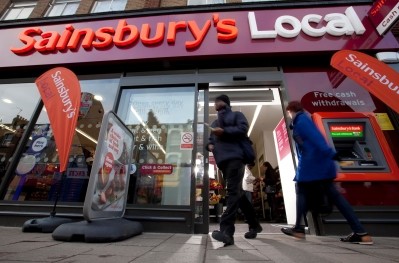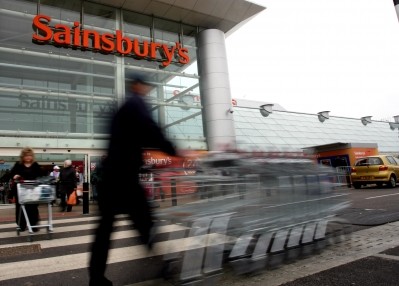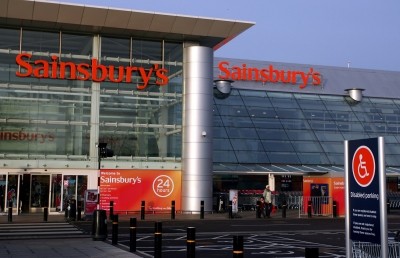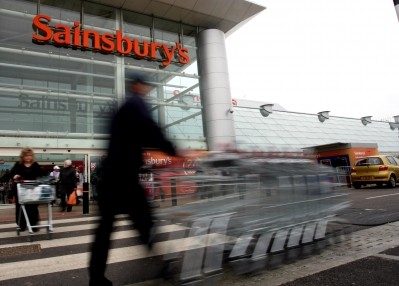Analysts respond to Sainsbury results
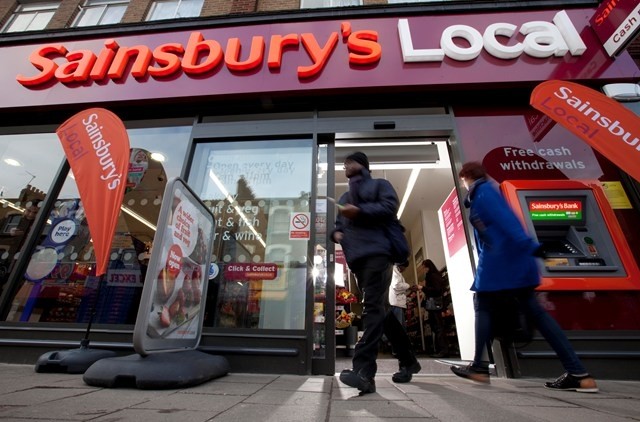
We include a range of responses from analysts below.
Shore Capital analyst Darren Shirley stressed whatever Sainsbury’s strategy might be, its financial performance would still depend on Tesco’s response to its travails.
“Despite the greater visibility on Sainsbury’s strategic plans, we continue to believe that much of Sainsbury short/ medium term earnings prospects will remain dependent upon the magnitude of the much anticipated Tesco price/margin reset.
‘Greater capital discipline’
“Whilst we applaud Sainsbury’s greater capital discipline, the focus on debt reduction and strengthening the group’s balance sheet, we struggle to forecast future years with confidence.”
George Scott, senior consultant at Conlumino, said Sainsbury’s profit statement had been “less negative than many had forecasted”. But he said “the third consecutive quarter of negative like-for-like [sales] confirms the enduring challenges Sainsbury’s faces from both the value and premium ends of the market”.
“This has been compounded by the resultant price rivalry among its big four rivals. However Sainsbury’s is being proactive in realigning its positioning and operations for this intensely competitive landscape.
“Moreover, the grocer’s intent to work closely with suppliers to deliver value-chain efficiencies to fund this will offer some comfort to the City, amid concerns on the impact to margins.”
Referring to Sainsbury’s joint venture with discounter Netto, Scott said his first impressions were “cautiously positive”.
Netto
“Netto’s offer is now more compelling on value-for-money than its previous UK operation which struggled and was subsequently acquired by Asda in 2010. But time will tell how the partnership will look and whether it will help drive visits to Sainsbury’s stores, rather than cannibalising sales.”
Scott said Sainsbury’s pledge to improve the quality of 3,000 own-label products was a good move. “Amid intensifying price competition, Sainsbury’s own-labels represent an essential tool to differentiate itself from its immediate peers.”
In summary, he said: “Sainsbury’s faces a fairly mountainous challenge, along with the rest of its Big Four peers, to regain market authority as the discounters and, to some extent, the likes of M&S and Waitrose, remain in the ascendancy.”
Edouard Aubin, analyst at Morgan Stanley, said Sainsbury’s statement on its strategy was “more about evolution than revolution”.
‘Downsizing’
“Apart from initiatives aimed at improving the balance sheet and improving the customer proposition, we think that one of the main new initiatives relates to the likely downsizing of approximately 25% of the estate.”
In its trading statement, Sainsbury said the 25% could be used to sell non-food or for “carefully selected concession partnerships”.
David Gray, retail analyst at Planet Retail, said Sainsbury’s decision to scale back investment in big stores was “prudent”, but warned: “Sainsbury’s must be careful not to neglect its core hypermarket & superstore format – which still accounts for the lion’s share of its sales and profits. This core format generates almost 80% of Sainsbury’s sales and probably a higher proportion of profits.”
Online and convenience
Its increased focus on online and convenience sales was understandable, said Gray, but he again urged caution. “Both will undoubtedly grow strongly – but even so, by 2018 we’re looking at a sales share of 11% for convenience and 5-6% for online.
“Big increases, yes, but still small relative to the critical big-box channel. Sainsbury’s must therefore continue to give its largest channel the attention it deserves.”
Julie Palmer, retail expert at Begbies Traynor, said: “… Price cuts alone will not suffice in increasing consumer spend. Sainsbury’s will need to practise what it preaches, evolving to meet shopper demands for convenience and quality, if it wants to retain and enhance its current 16% grocery market share.”
Sainsbury reported a pre-tax loss of £280M in the 28 weeks to September 27, with like-for-like sales excluding fuel falling 2.1% and total retail sales flat.
